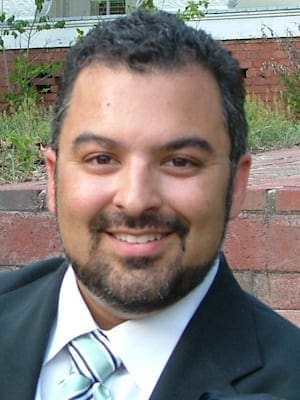An old adage suggests that the best way to measure church growth is by assessing the “three big Bs”: bodies-in-pews, budgets and buildings.
Baptists of all sorts, however, have called this perspective into question.
Kevin Ezell of the Southern Baptist Convention’s North American Mission Board stated that this adage is antiquated and may have to change.
“Success cannot be defined based on how many people a church keeps,” Ezell explained. “We must help [churches] redefine success based on how many people a church sends.”
John Buchanan, editor of The Christian Century, echoed this sentiment when he recently encouraged readers to “call a moratorium on counting [church] members” and “to witness to God’s love in Jesus Christ and to do everything we can to be Christ’s body in the world.”
Nearly four years ago, our church stopped keeping attendance, and we were instantly liberated from all of the anxiety that results from “managing” church as if it is a for-profit business.
At the same time, we started focusing on other factors to measure growth.
One factor included measuring spiritual growth instead. I was doing a dissertation on spiritual formation at the time, and I realized how difficult it was to determine whether people were growing spiritually.
As we reflected on this qualitative measurement, several questions were raised:
â— Do you count how many hours people pray and read their Bibles?
â— Do you count how many people worship, attend a discipleship group and participate in missions per month?
â— Do you quantify how many times people experience God in some form or fashion per quarter?
â— How do you define an “experience with God”?
All of those questions were good ones, but they still included the notion of counting numbers as a valid way to measure progress.
After several years of hard work, we finally discovered that there are more effective ways of measuring spiritual growth in a church. We began to listen to how people talked about and reflected upon their faith.
We asked whether people could think critically about faith formation, make connections between the Bible and their lives and intuit how the Holy Spirit shaped their worldview.
We also inquired whether members understood that their life circumstances had spiritual significance and communicated something about their relationship with God.
Instead of punching numbers, we began listening more closely to the personal narratives people told about themselves.
When they had trouble expressing that story, we provided a specific “spiritual grammar” that promoted the study of Scripture, a life of worship and a “Spirit-driven” life, all couched in God’s welcome and embrace.
A second factor we used to measure church growth was by doing what Ezell recommended: We determined how “missional” the church was in the local and global community.
We began, not by counting how many programs the church ran, but by assessing how people engaged in ministry on their own terms.
This required the congregation to redefine itself as a “teaching church” that helped regular folks in the pews – not only clergy – to see themselves as active participants and ministers of the gospel of Christ.
We encouraged people to see that they were “priests” and no opportunity to do ministry should go unnoticed.
To do so, we sought to help people in every age group to understand that there is nothing that a Christian does in life that escapes the scrutiny of God’s sacred call.
Even the children have been involved in learning the language of ministry, not just the ability to give the “right answers” to Sunday school lessons.
This type of philosophy of ministry does not lend itself always to “organized” missions or quantifiable church growth, but it does advocate for a healthy congregation bent on meeting God beyond the walls of the church rather than navel-gazing and running around trying to figure out what’s wrong.
Perhaps if we will ditch the numbers – or at least not make quantity the only factor in assessing our congregations – we can focus on other, equally important qualitative factors.
This might allow us to ask if churchgoers are engaging in spiritual practices that bolster their relationships with God while committing to social practices that connect people with wherever God is moving in the world today.
 Joe LaGuardia is senior pastor of Trinity Baptist Church in Conyers, Ga. He blogs at Baptist Spirituality, where a version of this article first appeared. It is used with permission.
Joe LaGuardia is senior pastor of Trinity Baptist Church in Conyers, Ga. He blogs at Baptist Spirituality, where a version of this article first appeared. It is used with permission.
Joe LaGuardia is senior pastor of First Baptist Church in Vero Beach, Florida.

